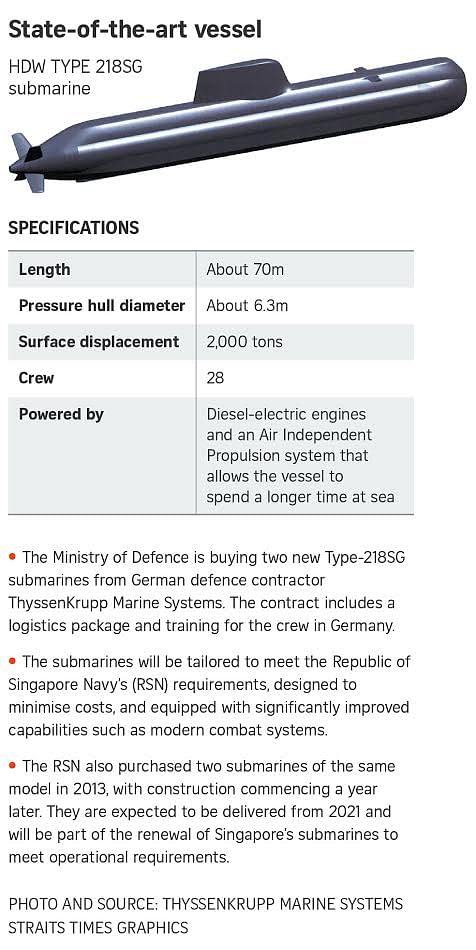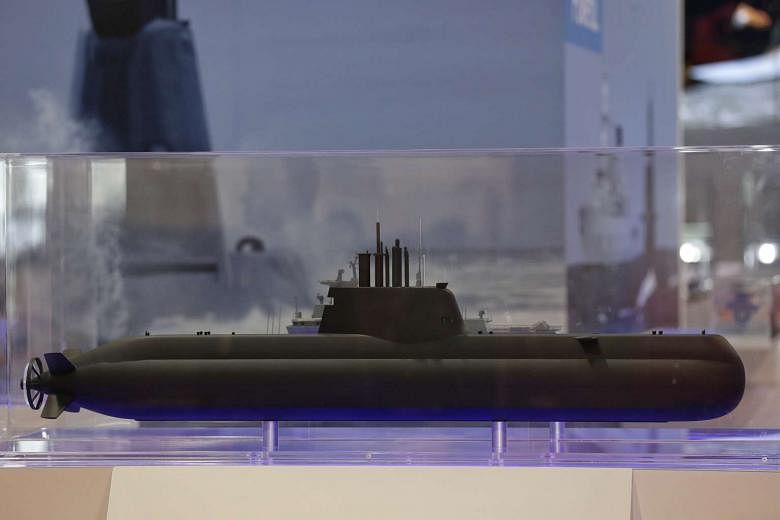Singapore's purchase of two new "state-of-the-art" submarines will give the Republic of Singapore Navy (RSN) greater flexibility in deploying its assets and in defending the country, said defence analysts.
Defence Minister Ng Eng Hen announced yesterday that Singapore would buy two Type-218SG submarines expected to be delivered from 2024. In 2013, it acquired two submarines of the same model that are expected to be delivered from 2021.
When all four submarines are delivered, the RSN will be able to rotate their deployment, with one under maintenance, one in training, and two carrying out operations, said Dr Michael Raska from the S. Rajaratnam School of International Studies (RSIS).
"This will give the navy greater submarine presence in the seas," he told The Straits Times.
Maritime expert Collin Koh, also from RSIS, pointed out that the navy's four Challenger-class submarines, which were made in the 1960s and bought by Singapore between 1995 and 1997, are ageing and two were retired in 2015.
When the two remaining Challenger-class submarines are retired, the Navy will still have its two Archer-class submarines - bought in 2005 - to complement the four Type-218SG vessels.
"It takes time to build up a world-class fleet, so such an expansion in numbers requires lots of planning ahead to achieve," he said.
Both analysts added that it is cost-effective to buy the same submarine model and from the same source - German defence contractor ThyssenKrupp Marine Systems.
Dr Raska said the 2013 contract might include an option to buy more vessels at a better price, and that there could be savings in maintenance and training as the crew will be dealing with familiar ships.

He added that the purchase of the state-of-the-art submarines is in line with Singapore's goal of modernising its armed forces.
"The key aim is to keep a maritime strategic edge for the next 20 years over its neighbours," he said.
But Dr Raska also noted that Singapore will have to be mindful of a response from its neighbours. "If Malaysia and Indonesia see this as tilting the military balance, they will want to get more submarines of their own. This could accelerate an arms competition in the region."


